Are you planning on planting peppers this season? These fast-growing plants produce bountiful harvests, and they’re suitable for growing in various climates across America. Starting a veggie garden is a great way to get fresh produce for the dinner table, and peppers are one of the most versatile veggies you can plant.
However, it’s not only your family that has a taste for peppers, pests, and diseases also like taking a sample of your crop, leaving destruction in their wake. Fortunately, it’s possible to give your peppers the protection they need by planting some beneficial companions.
Companion plants for peppers help with everything from pest control to managing soil conditions and attracting pollinators.
This post unpacks everything you need to know about the best companion plants for your peppers.
Watch Our Latest YouTube Video ...
Companions to Deter Pests from Your Peppers
Pests can get into your crop and do considerable damage before you even realize they’re there. Infestations can suck the life out of your produce, stunting growth while limiting the harvest yield.
Fortunately, you can plant companions around your peppers to steer the bugs and pathogens away from your crop. Pests, like people, rely on visual and scent cues to find their way into your garden. Planting the following companion plants masks the tasty smell of your peppers from the pests.
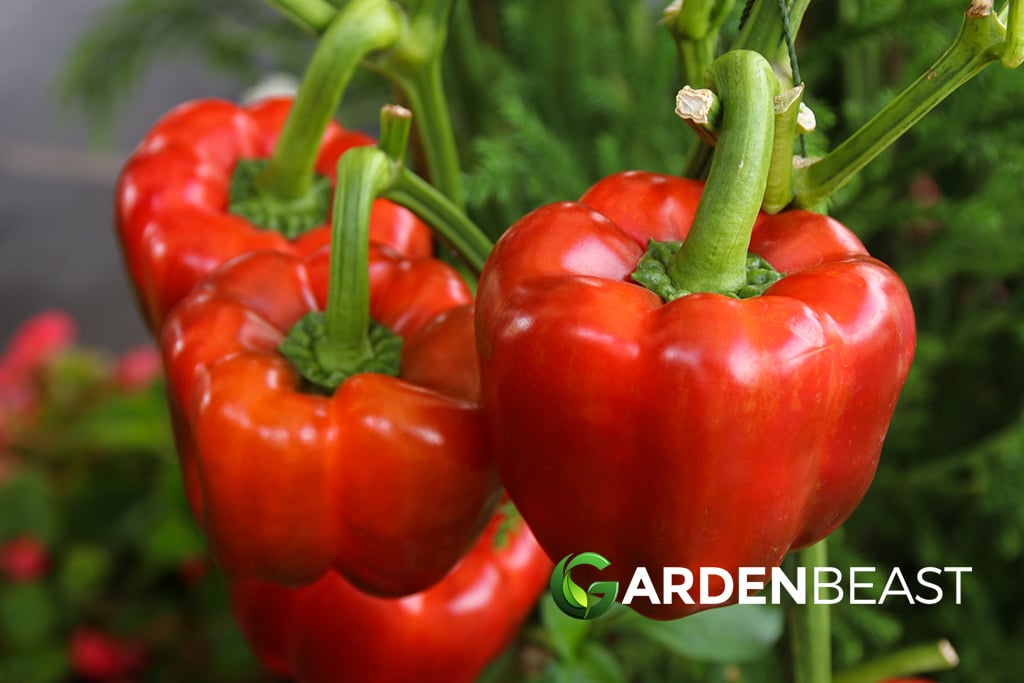
Scallions, Garlic, and Onions
The green peach aphid is a common problem for peppers. This bug feeds from the spring through to the fall, sucking out the juices in your peppers.
Signs of a peach aphid infestation include yellowing foliage, distorted growth, and curling of the leaves on the plant. Aphids also bring diseases into the garden, spreading pathogens around your peppers.
By planting members of the allium family around your peppers, you can deter these pests. Alliums like garlic, onions, and scallions contain sulfur compounds that bugs hate. By planting them around your peppers, you protect them from aphids.
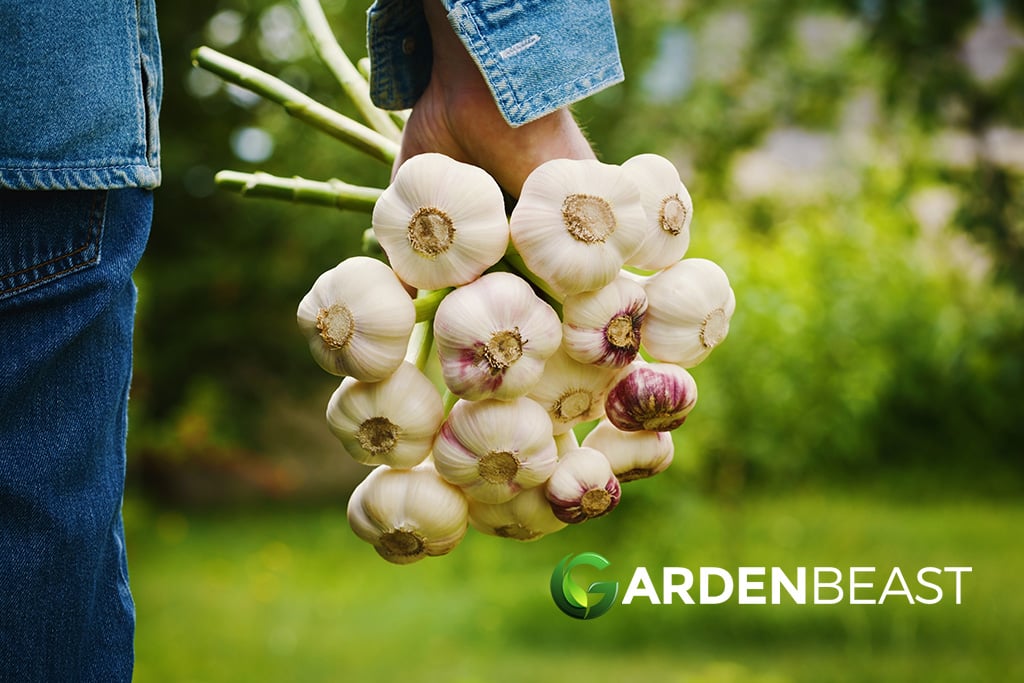
Basil
Basil is another excellent partner for your peppers this growing season. Basil protects thrip, another common pepper pest. These bugs leave a silver-like net across the leaves, fruits, or flowers of the pepper plants.
Thrips also spread disease around your crop, and the small stature of the thrip makes it challenging to spot to the untrained eye. Some signs of thrip infestation include dead terminal shoots or black specks of excrement. Thrips also produce early fruit drop and a net-like distortion of the peppers.
Basil keeps thrips away from your peppers. Basil releases phytochemicals into the air masking the scent of your peppers, so the thrips never find them.
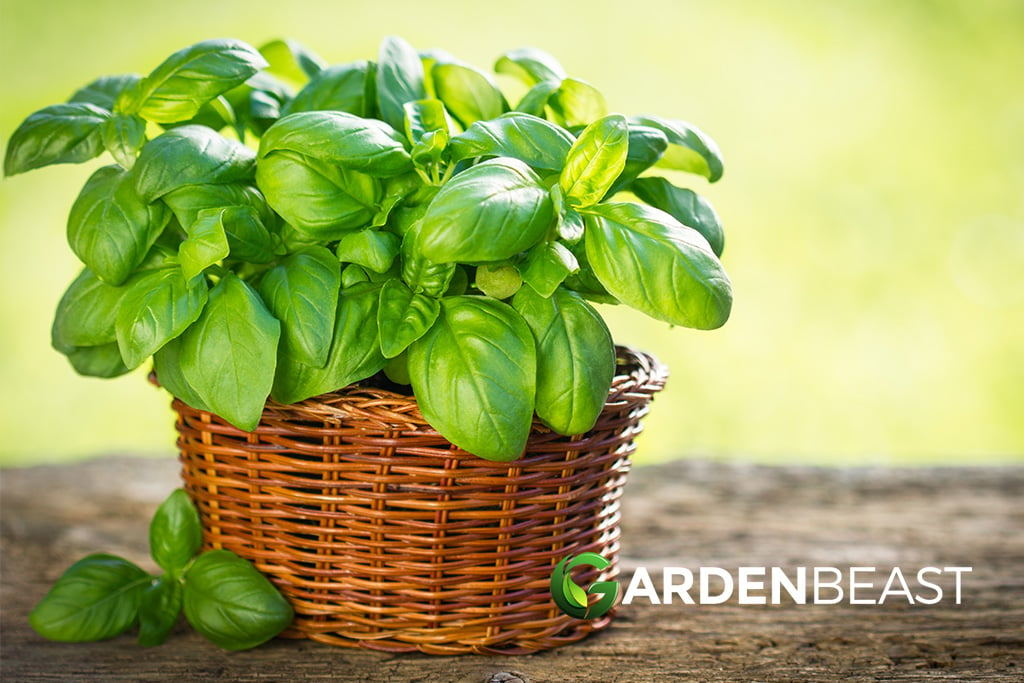
Radish and Pak choi
These “trap crops” lure the bugs away from your peppers, giving them something else to munch on instead of your primary crop. If you’re growing peppers, sooner or later, you’re going to run into the flea beetle. These pests burrow into the stems of the plants, making them susceptible to infection with diseases.
The small holes also stunt growth, reducing the harvest yield in your plants. Mature plants may cope with a flea beetle infestation, but seedlings will either experience stunted growth that only appears in later months, or they perish entirely.
Planting a trap crop of radishes or pak choi is a great way to keep these pests off your peppers. The flea beetles prefer these plants over your peppers, and they’ll leave them alone.
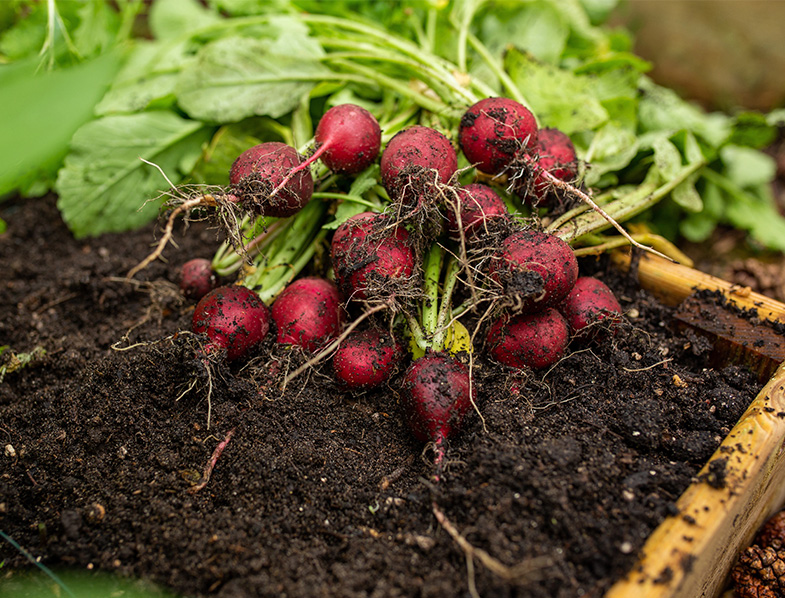
Hot Cherry Peppers
Planting some hot cherry peppers deters maggot flies from invading your peppers. These larvae tunnel into the skin of the pepper, eating the soft tissues inside the fruit.
Most gardeners won’t even notice the problem until just before harvest time, when the peppers look like they’re rotting from the inside out.
The flies laying the maggots prefer cherry peppers over regular bell pepper varieties. Planting them away from the crop helps draw the pests away from your bells.
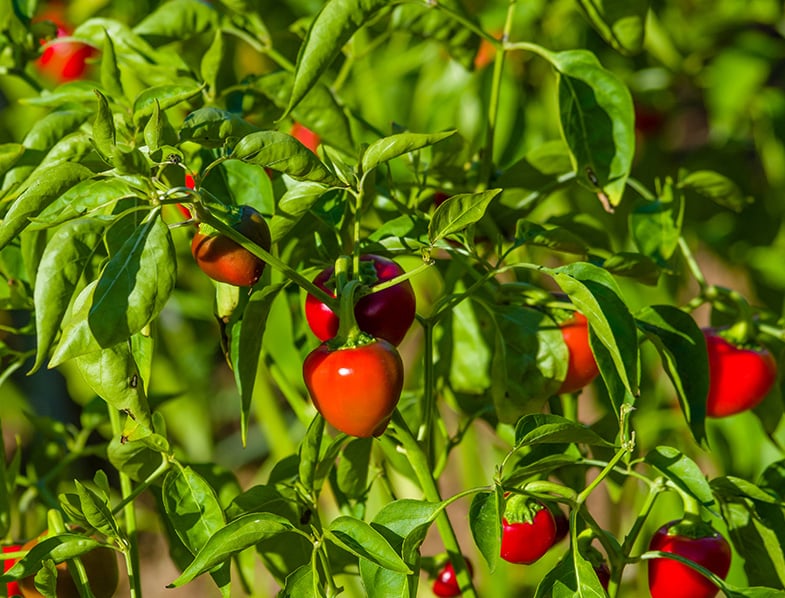
Nasturtiums
If you have problems with aphid infestations, you can sometimes wash them away with the hose. However, they often return to the scene of the crime to carry on their rampage across your peppers.
Planting some nasturtiums nearby turns the attention of the aphids away from your peppers. These pests love the nasturtiums, and they don’t travel throughout the garden, keeping your peppers safe.
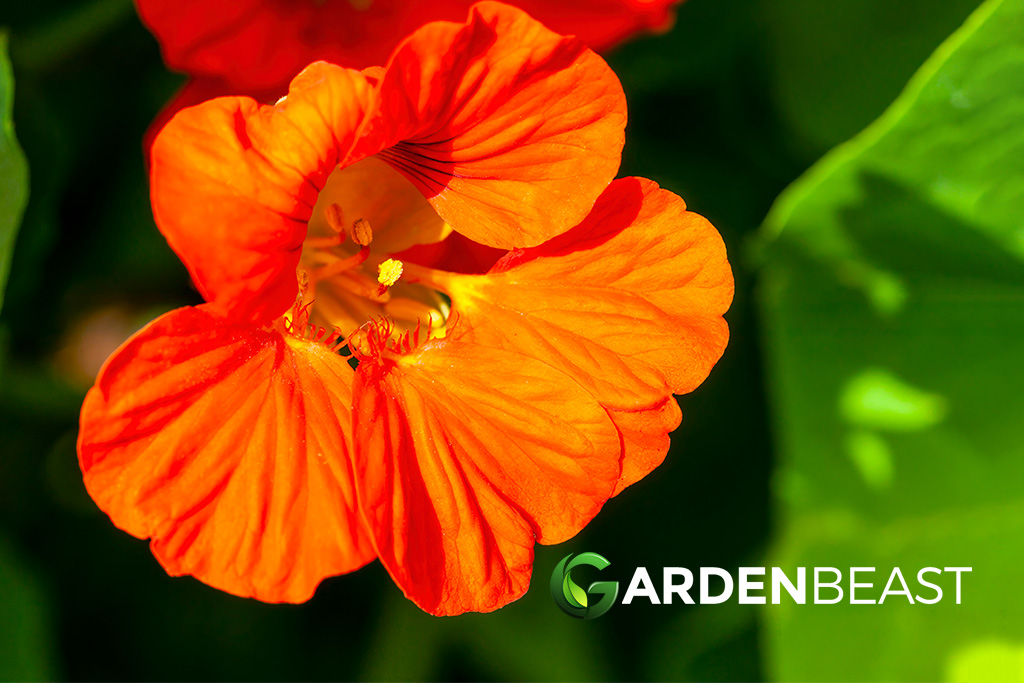
Companion Plants for Enhancing Biological and Ecological Environments
There are some “good” bugs to have around the garden. Typically, these little critters enjoy eating the pests that invade your veggie garden.
The ladybug is an example of a beneficial insect that enjoys eating other bugs, keeping your plants clean. Here are a few companions that attract these beneficial bugs into your veggie patch.
Fennel, Dill, and Cilantro
Some flowering herbs that have a relation to the carrot genus make excellent companions for your peppers. These plants produce tiny clusters of flowers ideal for housing predator bugs that feed on pepper pests.
Dill, cilantro, and fennel are all examples of pepper companions offering a powerful, attractive scent to pest predators like predatory wasps that feed on caterpillars and hornworms. Lacewings and ladybugs enjoy feasting on bugs that sip on the juices of the carrot family of plants.
Plant these companions around the garden edges and give the beneficial bugs free roam inside the veggie patch.
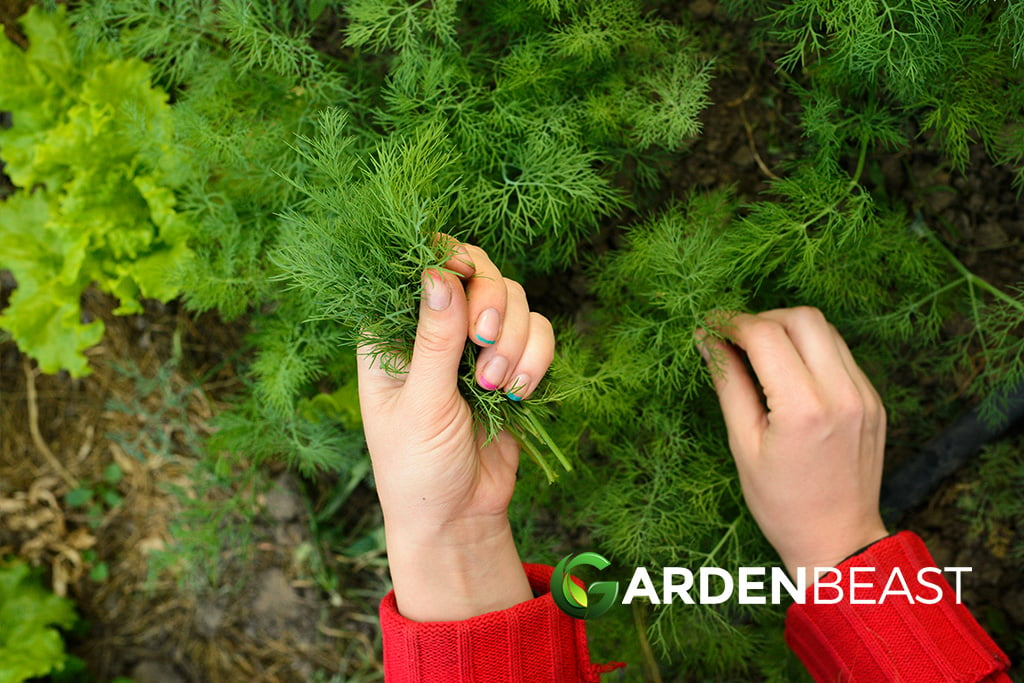
Sunflowers
The bright and cheery sunflower makes another exceptional addition to the vegetable garden. Not only are sunflower seeds edible and great sources of healthy fats, but the plant also drives pests out of the garden.
Sunflowers invite pollinators into the yard, even when they aren’t in bloom. When the flowers are yet to open, the sunflower starts producing EFN (extra floral nectar) from leaf glands on the underside of the foliage.
Beneficial insects go mad for this residue, and they’ll flock to your yard to gorge on the EFN and maybe take care of some pests while they’re around. The sunflower starts producing EFN when it reaches a few inches in height. As a result, you get protection for your garden early in the growing season.
Plant your sunflowers in and around the pepper plants. Start early in the season, and you’ll have plenty of beneficial bugs protecting your pepper plants.
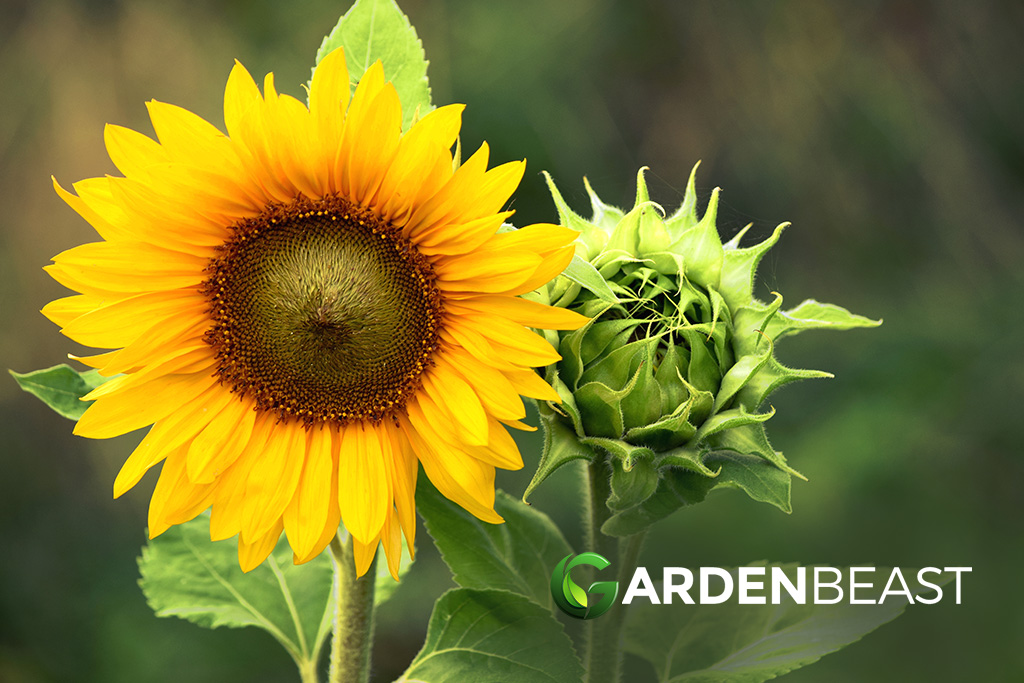
Companion Plants Offering Weed Control
If you have a large veggie patch, you might experience an issue with weeds taking over some areas during the growing season. Most garners take care of this problem by mulching affected areas with straw, shredded leaves, or grass clippings. These amendments help to block sunlight from getting to weeds, preventing them from emerging in the garden.
However, you can get the same effect by planting pepper companions in the veggie patch. These plants act as living mulch, with the specific intention of growing for weed control.
Subterranean Clover
The subterranean clover is an annual winter cover crop that also suits use as a living mulch. It grows in a similar manner to the peanut plant, with pegs forming from its above-ground blooms. The peanut pegs grow downward toward the soil surface, starting seeds.
However, you must overwinter this plant properly in cold environments. When temperatures drop below 15 degrees F, the subterranean clover dies. Studies show that planting the subterranean clover controls weeds better than conventional weedkiller treatments.
To prevent the subterranean clover from competing with other crops, make sure you mow it regularly or cut it back. This strategy contains the pegs developing, providing easy management of the plant in your garden.
After the cold air in the winter kills the plant, you can transplant a new crop or just till it into your soil to add back nutrients and organic matter.
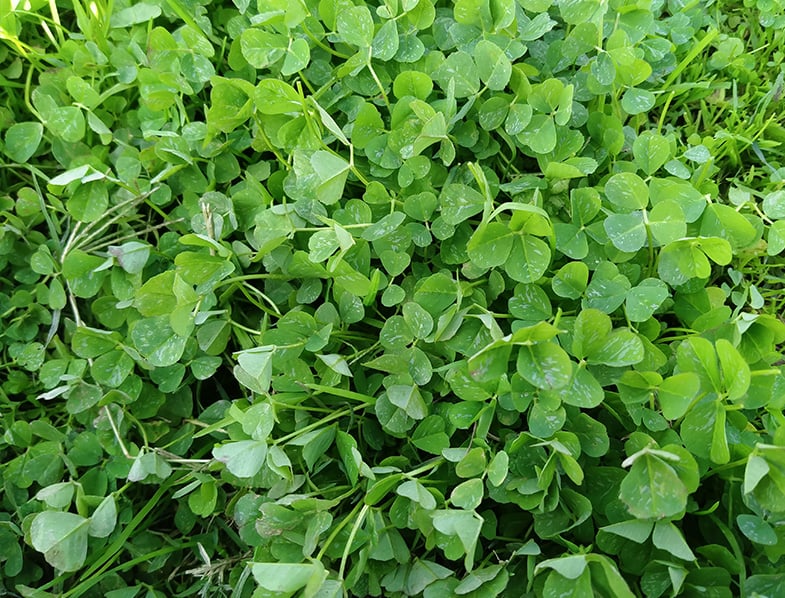
Companion Plants for Improving the Soil
As mentioned, companion plants can keep the bugs away and bring beneficial bugs into your yard to protect your plants. However, companions also serve the purpose of improving the soil conditions for your peppers.
The companions convert nitrogen from the air, feeding it into the soil to enhance the growth of nearby plants. Other companions are a cover crop that the gardener tills back into the ground to add beneficial nutrients and organic matter for the rest of the crop.
Cowpeas
Cowpeas are a great example of a companion plant for peppers that enriches the soil around your plants. The cowpea acts as a summer-season companion plant, often featuring as a cover crop in the garden.
The cowpea adds nitrogen into the soil by converting it from the air.
Pepper plants love nitrogen; it helps the plant get bigger, increasing yields.
A Californian study shows that cowpeas grow alongside pepper plants improves the final harvest and yield of pepper plants. It achieves this effect by enhancing nitrogen availability in the soil and reducing the presence of weeds in the garden.
It’s best to plant your cowpeas in the spring, weaving them around the pepper patch for best results.
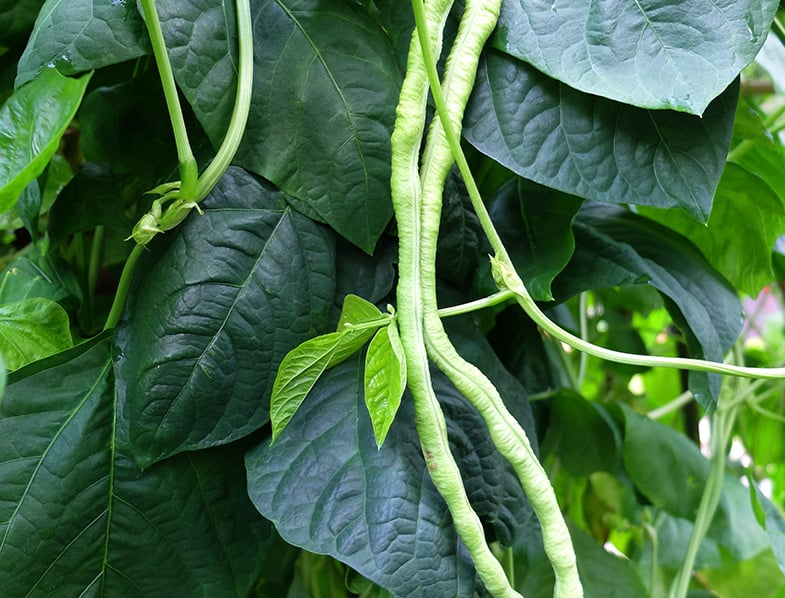
Wrapping Up
Take a few of these companion planting ideas and try them out in your veggie patch alongside your peppers. Companions make it possible to avoid herbicides and pesticides on your plants, keeping your produce organic. Increase your yield, and keep the pest off your plants for an outstanding crop this season.
